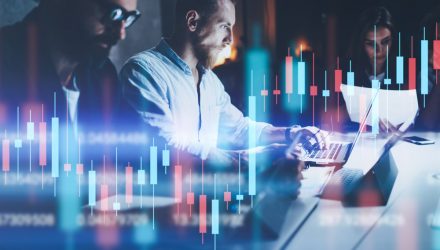The ongoing expansion of the ETF industry continues to bring previously hard-to-reach corners of the global financial market to the fingertips of mainstream investors and institutional money managers alike. However, with innovation also comes new complexities, and for many, the towering lineup of exchange-traded products can seem daunting. For traders and investors alike, there is a host of obvious and many not-so-obvious factors to consider before buying into a position.
Below, we look at five questions every investor should ask when buying an ETF:
1. Is It an ETF?
Don’t take this question as an insult to your intelligence. The term “ETF” is notoriously used to describe a universe of inherently different products: the exchange-traded product umbrella covers exchange-traded notes (ETNs), unit investment trusts (UITs), and grantor trusts, in addition to ETFs. Most are aware of the general differences between ETNs, which are debt instruments, and ETFs, which feature no credit risk but can experience tracking error. However, a surprisingly large number of investors (including many professionals) have a poor or misleading understanding of the underlying nuances and complexities associated with each of the various exchange-traded instruments. It’s important to first and foremost understand the differences between the various ETPs available, because a seemingly minor difference in product structure can often have a meaningful impact on bottom line returns.
2. What’s Under the Hood?
Asking what’s under the hood is an important question that ETF investors and car buyers alike must remember to ask. What exactly are you looking to buy? It may seem obvious, but it’s important to have a clear-cut objective in mind before shopping for an ETF. The next step is to take a careful in-depth look at each of the available products that suit your investment objectives. For example, let’s say you’re looking for gold exposure. With dozens of gold ETFs to choose from, your next step should be a thorough look at how each of the products achieves its objective. Investors can opt for a physically-backed gold ETF, while others may prefer the use of futures-based products; neither of these is better than the other, the point is that investors need to have a clear understanding of any given product’s objective and approach to achieving it, otherwise it may be wise to walk away – quickly!
3. How Frequently Does It Trade?
As with any financial instrument, liquidity is an important factor to consider before making an investment. However, looking at average daily trading volumes is only half the picture because ETFs are capable of something called “spontaneous liquidity.” As the name suggests, this unique mechanism allows for the creation of new ETF shares almost immediately, thus making it possible to execute large trades in thinly traded funds without moving the price by a meaningful amount.
Simply put, low-volume ETFs should not be avoided because of liquidity-related fears; nonetheless, caution should certainly be exercised, as wide bid-ask spreads can put you in an early hole. After you find a product that meets your liquidity criteria, make sure to use a limit order when establishing your position.
4. Are There Better Options?
The real beauty of the ETF industry is that it provides investors with the luxury of choice; with over 2,805 ETFs and ETPs on the market, there is duplication in many asset classes and investment strategies, giving investors the freedom to choose. For example, investors looking for a financials equity ETF have a host of offerings to consider. While most of the ETFs in this space offer similar objectives, a number of alternatives are also worth a closer look. Investors may wish to steer clear of market-cap weighting and opt for an equal-weighted product like the Invesco S&P 500 Equal Weight Financials ETF (RYF) instead, or perhaps the revenue-weighted Invesco S&P Financials Revenue ETF (RWW).
Just like in the real world, shopping around before buying an ETF can save you money. There are a handful of instances when doing your homework can help you cut down on expenses over the long haul. For example, the Vanguard FTSE Emerging Markets ETF (VWO) is linked to the same emerging markets index as the iShares MSCI Emerging Markets ETF(EEM); the difference, however, is that VWO charges a fraction of the cost of its competitor, increasing the appeal for cost-conscious investors.
5. How Balanced Is the Portfolio?
ETFs hold major appeal among long-term, buy-and-hold investors because of the cheap and easy diversification benefits they offer. However, not all ETFs are well diversified; in fact, it’s not uncommon for a fund to allocate over 50% of its total assets to just 10 holdings. Another example is foreign equity ETFs, which are prone to several potentially unwanted biases. Emerging markets ETFs tend to be dominated by multinational giant and large-cap stocks, which are not truly a “pure play” on the local economy, and this sort of bias can effectively diminish the diversification benefits associated with international investing. Investors need to take a good look under the hood of a product before buying into a position. It’s important to take note of any major allocations to a single stock, country, or sector, as this could have a significant impact on the fund’s risk/return profile.
For more news, information, and strategy, visit the ETF Education Channel.








